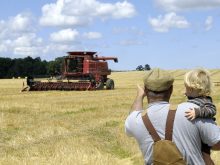La Nina was officially declared dead May 24 by the Australian Bureau of Meteorology.
A warm pool of water that formed recently in the Pacific Ocean finally sent the little brat packing.
The 2010-11 La Nina weather phenomenon, characterized by a cool ocean, was one of the strongest on record.
She was likely responsible for the dry conditions in the Midwestern United States, and her tragic flourish may have been the awful recent tornadoes. In Australia, the insane flooding in Queensland is credited to her, too. With a little less violence, she drenched much of Western Canada.
Read Also

Crop profitability looks grim in new outlook
With grain prices depressed, returns per acre are looking dismal on all the major crops with some significantly worse than others.
There does seem to be a shift in the weather in the central and northern Prairies. From cool and damp, we have recently moved to warm and dry – quite a change from last year. In the south, of course, it’s a different story, as southern Manitoba and Saskatchewan continue to be hammered by rain.
Getting out to Meadow Lake Provincial Park on the long weekend was an eye-opener. It was crispy and dry, the park had declared a fire ban and there were three recent forest fires. Our lake waters were down, although ever so slightly, from last summer.
Part of the northern grain belt – traditionally a tough slog even in perfect years (have there ever been any?) – has had just 40 percent of normal precipitation in the last month. This heart-shaped area reaches more or less from Kindersley to Meadow Lake and over to just east of Edmonton. It’s a big, red blob on the Environment Canada map. A second blob reaches from Prince Albert to Wynyard.
The drying effect was evident: farm equipment was everywhere on the land. Along with cattle, there were bison and llamas and some animal I have never seen before (a yak, maybe?) out in the fields – with dry hoofs.
As we drove south though, many fields still had standing water – in some cases, a lot of it – but farmers were working around the pools, getting in at least some of the crop.
You can see the effect of the vastly different weather on seeding progress, which is well advanced in northern Alberta and Saskatchewan and ranges from terrible to non-existent in southern Saskatchewan and Manitoba.
It is incredible how dramatic the differences in prairie farm conditions can be.














